Are you considering purchasing A Tuttle Twins Series of Stories: America’s History by Connor Boyack and Elijah Stanfield? If so, you likely have questions about the format, the content, the topics that are covered, and the background of the author.
We’ll give you a video flip through of the book and try to answer your questions too so you will feel confident in your purchase if you do decide to buy it.
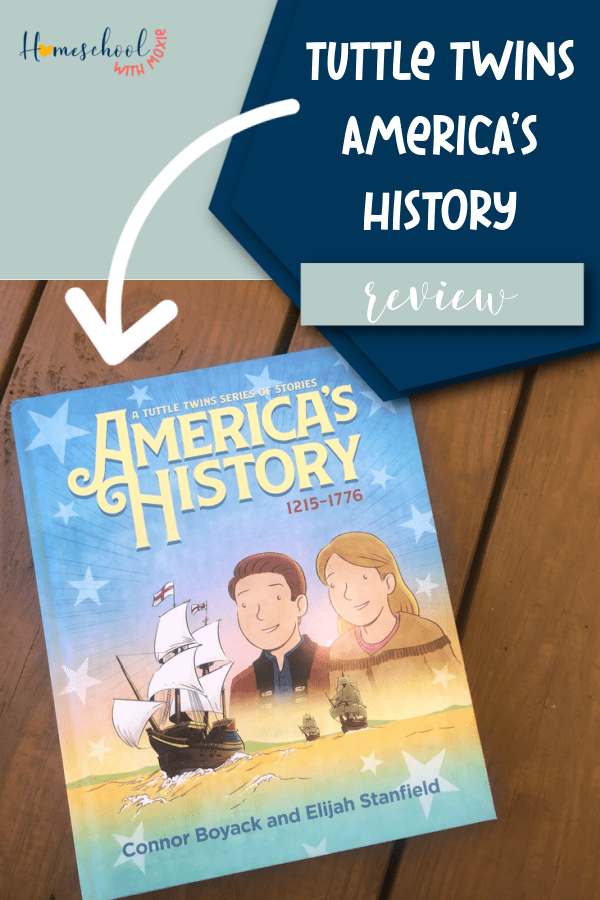
My posts contain affiliate links.
Video Flip Through of Tuttle Twins History Book
Since it’s always easier to get a feel for a new book by seeing it, here’s a flip through so you can see how the book is laid out, plus understand the main features and style.
A Tuttle Twins Series of Stories: America’s History by Connor Boyack and Elijah Stanfield is a 240-page storybook that starts with the events that led to the settling of America by European colonists and then shows the progression of cause and effect that led to the Declaration of Independence. This book spans 1215-1776.
This storybook/textbook is not concerned about your children memorizing names and dates. Rather, the authors desire that your kids understand the WHY of history and how these ideas are still relevant even today. I think you’ll find their approach refreshing!
You can download a chapter for free to see it for yourself.
What other resources are included with this Tuttle Twins history textbook?
At the time of this writing, the launch bonuses are still available for free. However, this may have changed by the time you purchase.
These are the other resources that go along with this book.
- 200 pages of PDF companion curriculum and activities
- MP3 audiobooks
- 4 hours of video

Check here for all the Tuttle Twins books and resources.
Topics Covered in A Tuttle Twins Series of Stories: America’s History
This first American history book written by Connor Boyack covers the background to the settling of the American continent by European explorers. So this book begins in 1215 with Marco Polo and the Silk Road and ends with the Declaration of Independence in 1776.
Other chapters include these topics, people, and events:
- Explorers
- The Protestant Reformation
- The First Colonial Voyages
- Mercantilism and Self Government
- The African Slave Trade
- England’s Royal Problem & Various Wars
- John Locke
- The Glorious Revolution
- The English Bill of Rights
- The Nature of Empire
- The Whigs and the Tories in England
- The Stamp Act Congress
- The Sons of Liberty
- Timeline leading to the First Congress
- The Road to War – Lexington and Concord
- The Second Continental Congress
- Bunker Hill
The last chapter might feel like an interesting way to end this book, but it directly addresses the current cultural debate about whether America should be celebrated as a birthplace of freedom and liberty or scorned because some of the Founders did not live up to their own ideals in the Declaration.
Chapter 11 is titled “Liberty for All” and in this final chapter, Connor wrestles with the question of whether Independence Day should be “A Day of Celebration or Resentment?”
In the story-style of the Tuttle Twins books, twins Ethan and Emily have conversations with friends in their community of different ethnicities. They talk through how people of different backgrounds in the United States perceive Independence Day and how we can address the evils of slavery while still being proud of our founding.
Author Connor Boyack doesn’t shy away from discussing the “Shameful History” that included slavery, treaties being broken, the Trail of Tears, and more.
Here’s one such conversation that the main characters have with their friends.
“How can we still feel pride in America when we have done these terrible things in history? Mrs. Miner, you’re a black woman, and Mr. Miner, you’re Native American. People that look like me did these things to you. But you’re still here celebrating? Why?
The Miners looked at each other, and seemed to smile sadly. They sat down next to her on the grass, one on each side.
“Yes, we’re here celebrating. Because this country’s founding principles are worth celebrating. Even with the horrible things that happened – and they were horrible – it’s still worth taking a moment to celebrate what was good.
A Tuttle Twins Series of Stories: America’s History 1215-1776 (page 211)
What grade or age is the Tuttle Twins History Curriculum for?
The author says the Tuttle Twins history curriculum is recommended for ages 7-13. We’re using it with our 9 year old this year.
Of course, your younger kids will gain so much just by reading this book independently or with you. If you have students at the older range of recommended ages, you could easily ask for written narrations or other projects.
Older students might benefit more from the student PDF workbook.
Does the Tuttle Twins History book mention slavery?
Yes, this Tuttle Twins America’s History book does mention slavery. Since it covers the years leading up to America’s founding, 1215-1776, slavery of course does play a role.
The basic gist of their approach to talking about slavery is that it was evil, it had a significant role in some of the colonies, yes – some of the founders did own slaves, and yes – they didn’t always live up to their ideals in the Declaration.
However, the American experiment that was set in motion by the Founders did eventually result in the most freedom for the most people in history.
We can’t really learn from history by pretending some things didn’t happen. We shouldn’t be afraid to talk about it.
A Tuttle Twins Series of Stories: America’s History 1215-1776 (page 220)
Here are some more relevant quotes from the book about how they approach the topic of slavery:
But it’s also true that the ideas in the Declaration of Independence are what eventually freed my family… For the first time in history, people saw that slavery was evil and courageously fought to end it. That’s also part of American history, and that’s something to be very proud of.
A Tuttle Twins Series of Stories: America’s History 1215-1776 (page 222)
And then,
Don’t be afraid of the truth – take the good and the bad and learn from it. If you do that, I think you’ll come to the same conclusion that I have… that all men really are created equal, and we must never be afraid to stand up for the rights of our fellow humans at all times and in all matters. Then politicians and their propaganda lose their power, and our world will continue to grow more peaceful, unified, and prosperous.
A Tuttle Twins Series of Stories: America’s History 1215-1776 (page 222)
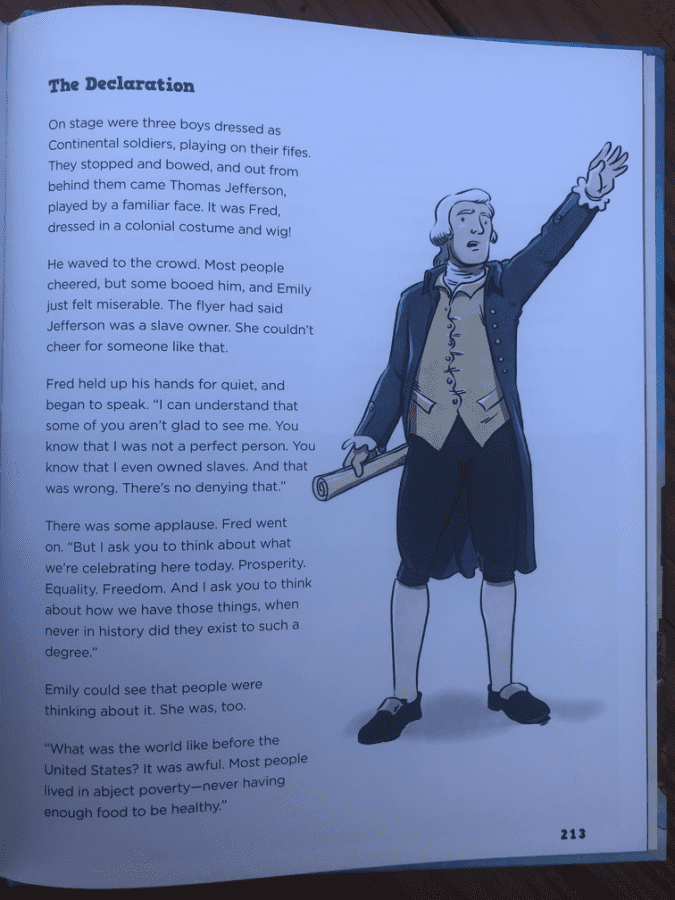
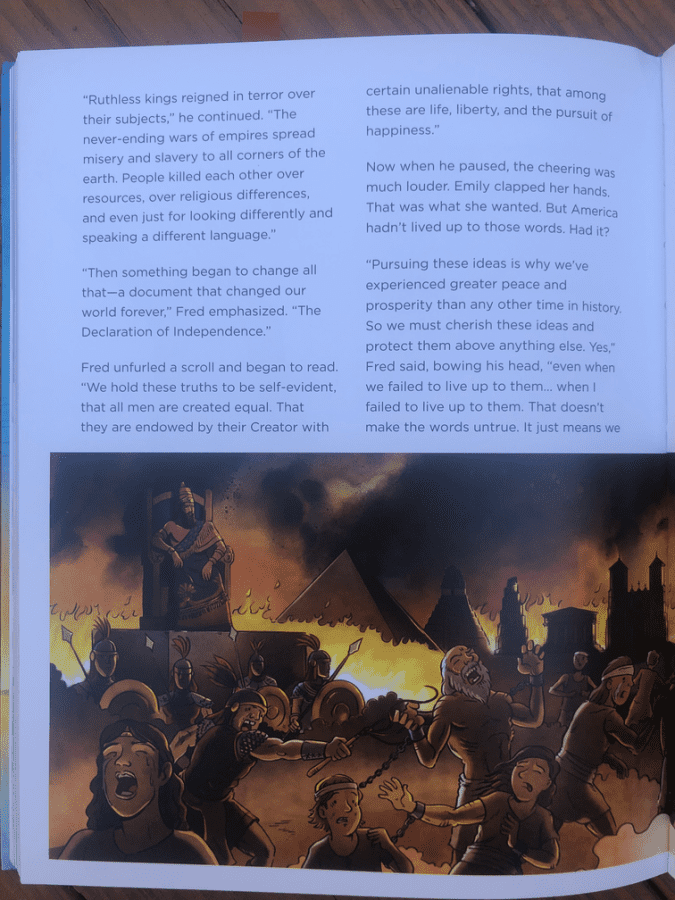
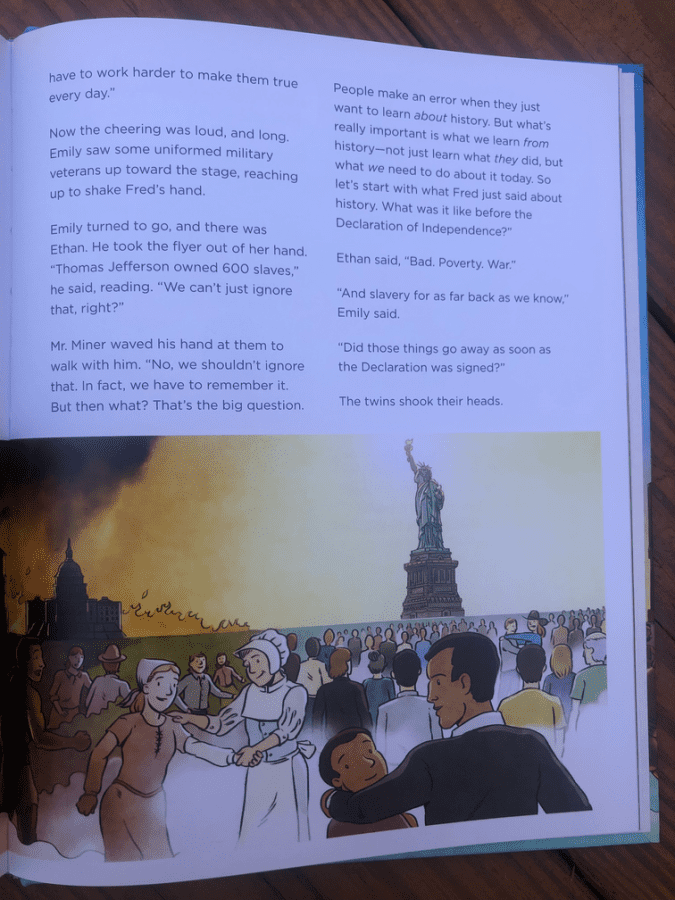
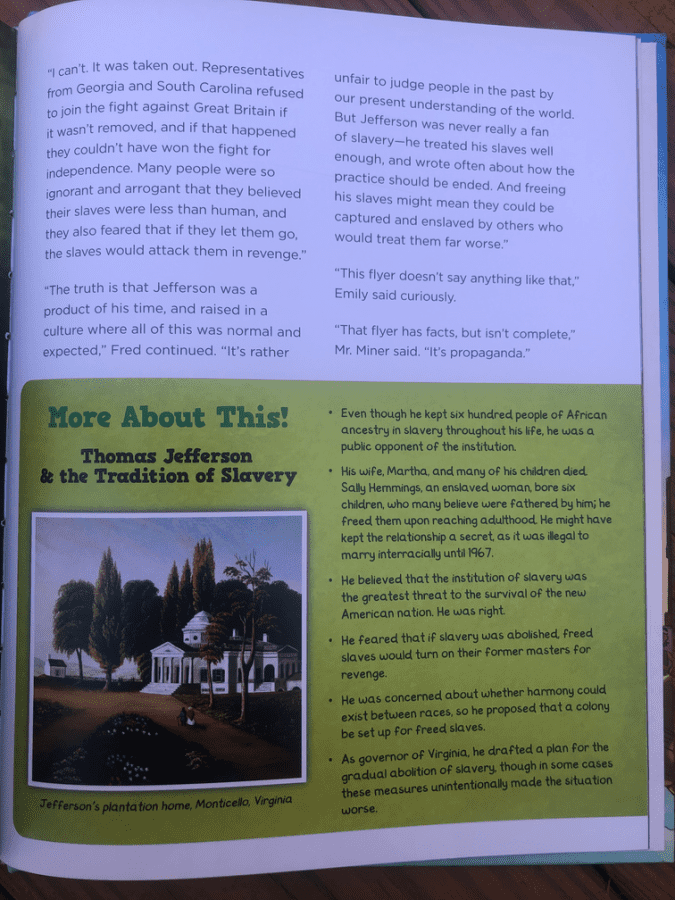
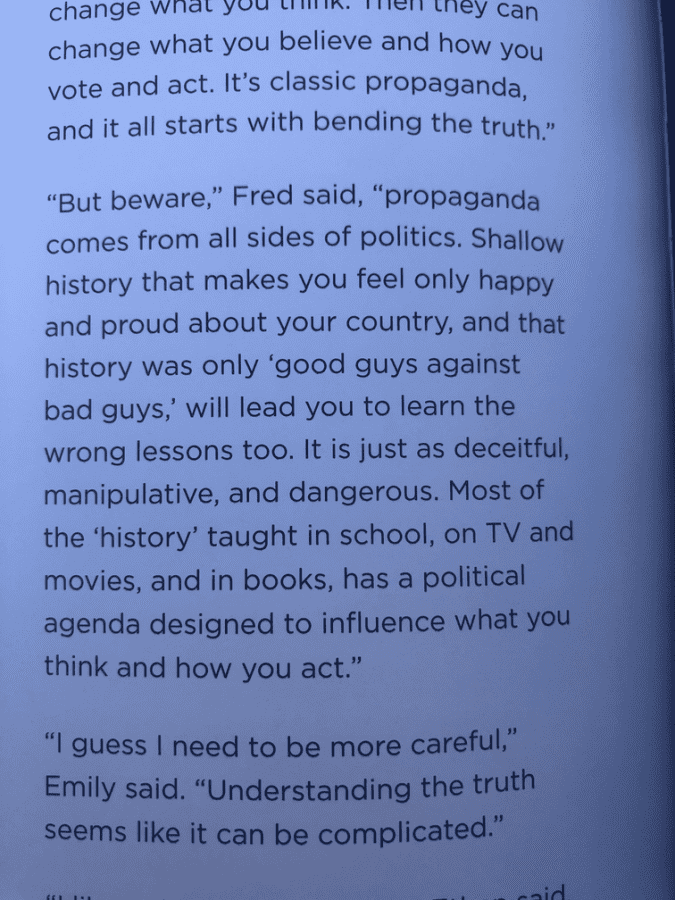

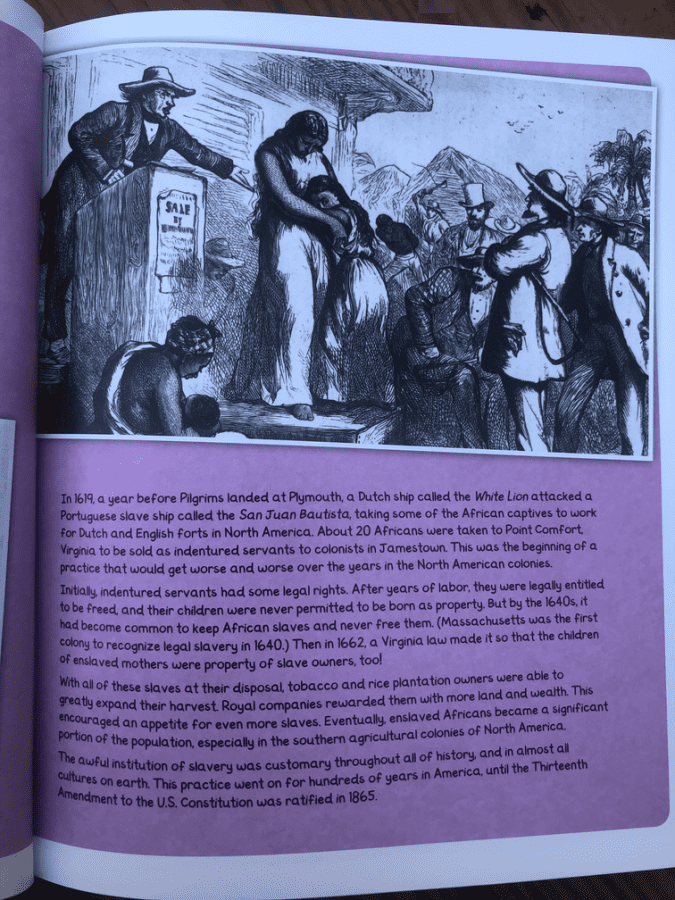

I hope this gives you some insight into the approach this Tuttle Twins history books takes with the topic of slavery.
Who writes the Tuttle Twins?
The author of the Tuttle Twins books is Connor Boyack.
From his website, here’s Connor Boyack‘s biography:
Connor Boyack is founder and president of Libertas Institute, a free market think tank in Utah. Named one of Utah’s most politically influential people by The Salt Lake Tribune, Connor’s leadership has led to dozens of legislative victories spanning a wide range of areas such as privacy, government transparency, property rights, entrepreneurship, education, personal freedom, and more.
So if you’re wondering whether the author is liberal or conservative, here’s your answer. Connor writes from a conservative or libertarian perspective and this comes through very clearly in his Tuttle Twins history books.
Yes, Connor Boyack is a Mormon, but this background doesn’t directly play into his Tuttle Twins series. He addresses economic, government, and personal freedom issues in the Tuttle Twins books and doesn’t touch on Mormonism. We are a Christian family and have no problem reading his books in our homeschool.
If you want to hear more from Connor himself, check out episode 62 of the Homeschool with Moxie Podcast, where we discussed his book for parents, Passion-Driven Education: How to Use Your Child’s Interests to Ignite a Lifelong Love of Learning.
Is this book comprehensive or do I need to supplement?
It’s comprehensive enough for my 4th grader. The difference with this book as compared to typical history textbooks is that it really dives into the cause and effect of history – the WHY – instead of just asking your kids to memorize a bunch of names and dates.
We aren’t supplementing. I haven’t used the worksheets that are available to use with this book. We typically do notebooking and narration instead. But the worksheets do look good. They include a lot of questions and activities that would require your child to think beyond the basic facts. The included lesson plans and worksheets remind me of a notebooking-style lesson.
If your child is on the younger spectrum, you’ll likely be fun just enjoying the book as-is. It will naturally lead to discussions and oral summaries. If your kids are older and you want some written work, you can have them periodically write about what they learn. You can even do this in creative ways, like asking them to write a journal entry from one of the explorers or Founding Fathers from the lesson. Or, your child could create an ongoing timeline or map.
Is this a Christian curriculum?
Here’s one of the questions I received over on YouTube about this book: “Is this a Christian curriculum?”
And here’s my answer: No, I wouldn’t necessarily categorize this as a Christian curriculum. The author is Mormon, although there is no Mormon theology presented. It doesn’t shy away from discussing the Protestant Reformation, for example, and how this and other events in Europe contributed to the settling of America by Puritans and others.
Here are a few pages from the book so you can see how they address it.
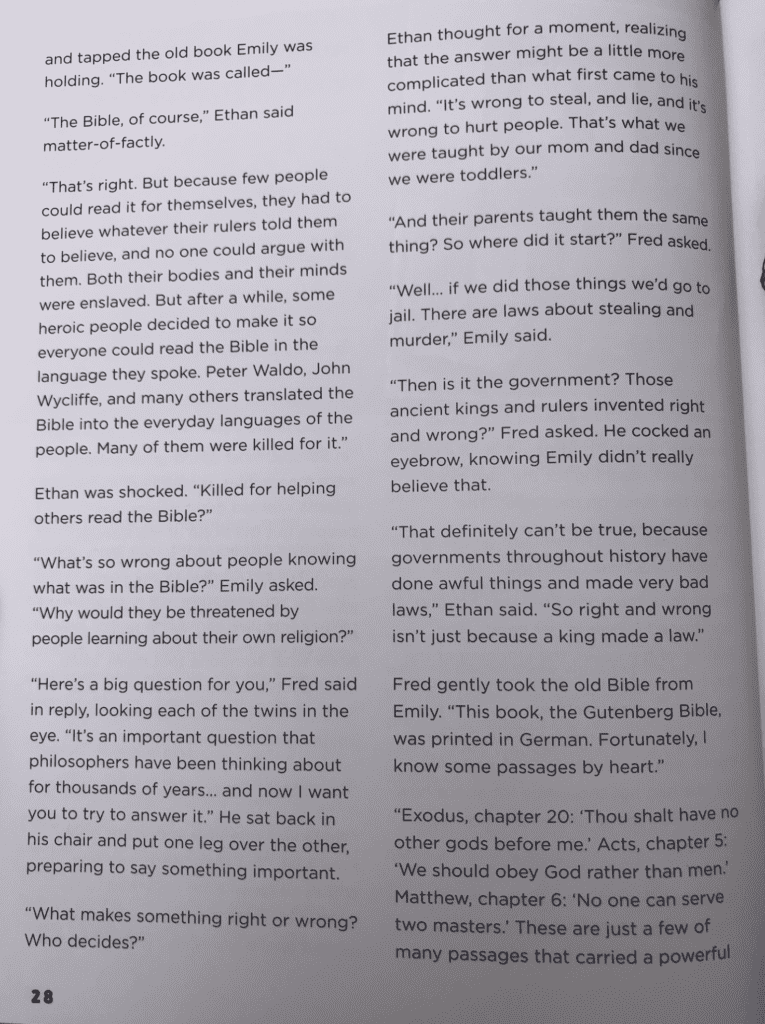
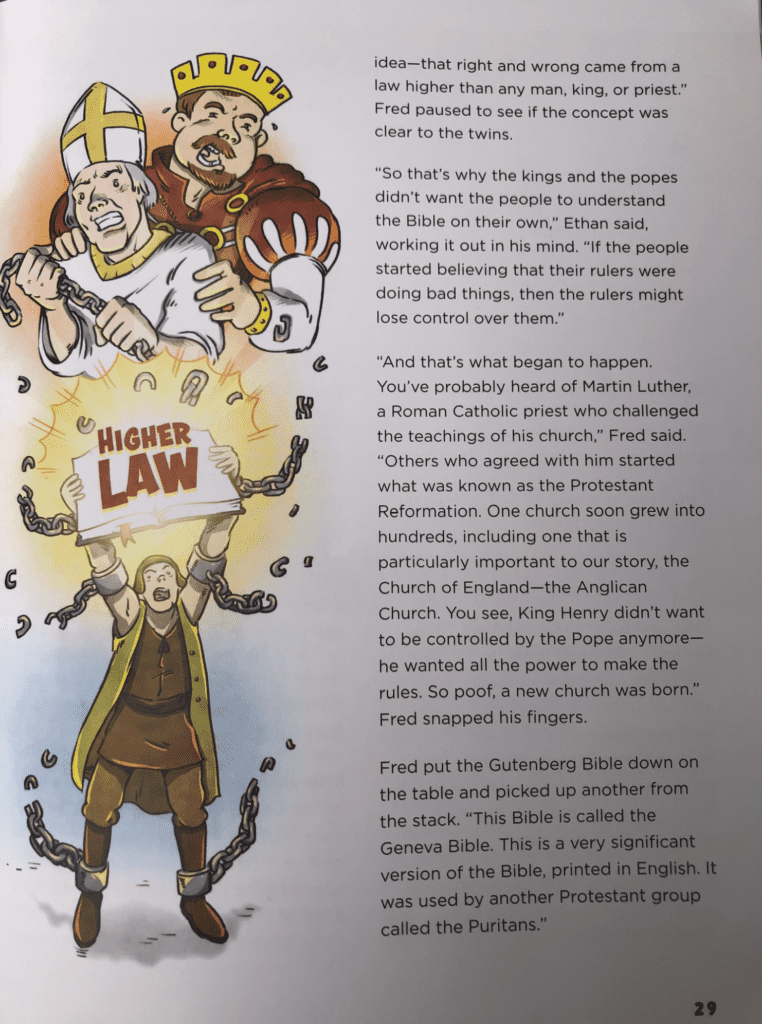
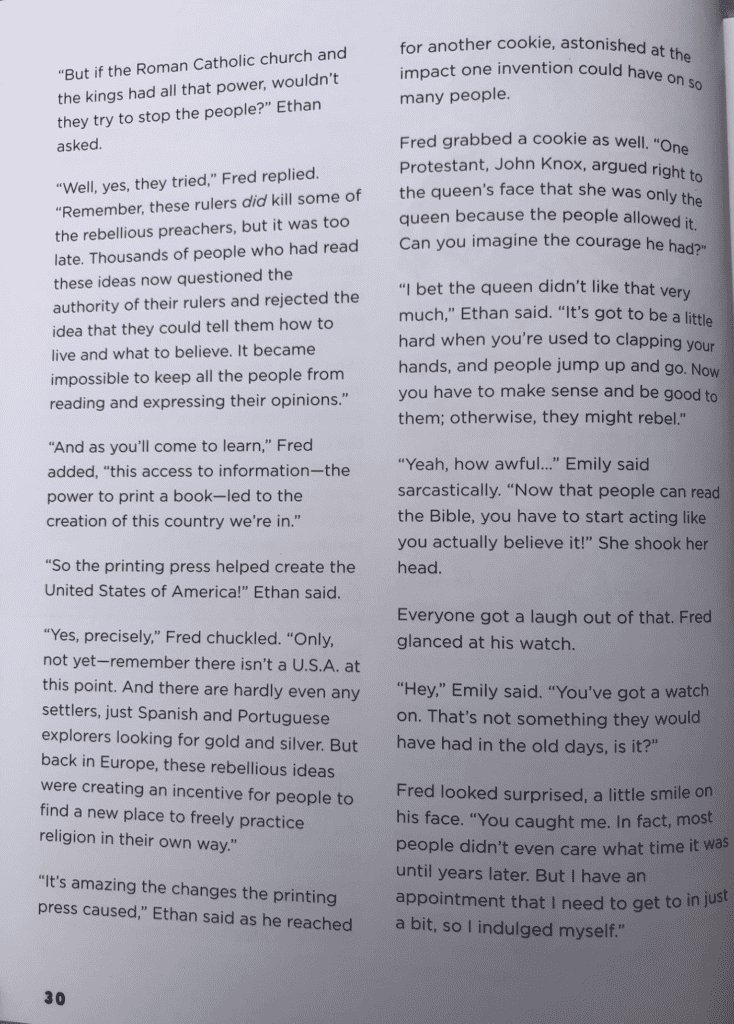
Want more Tuttle Twins History Resources?
We’ve personally used (and recommend) resources for every age level. The only books we haven’t had a chance to use are the preschool board books because we don’t have any little ones left at home.
Here’s a look at the Tuttle Twins books for kids in elementary school.
My teens loved the Guidebooks.
But I think their favorite books would have to be the Choose Your Consequence books from the Tuttle Twins.

